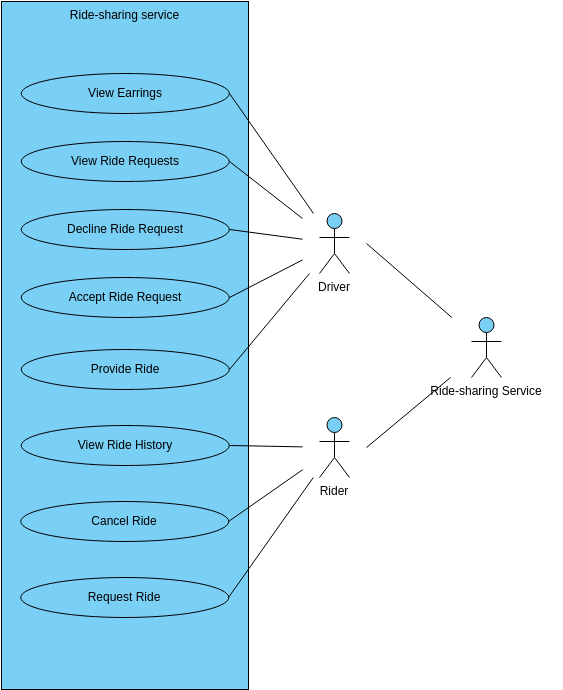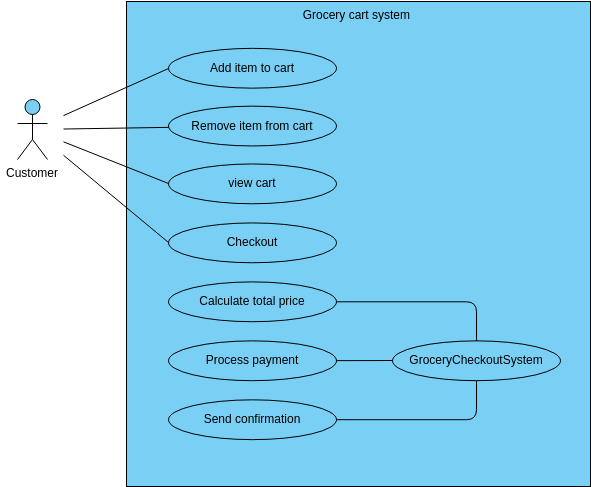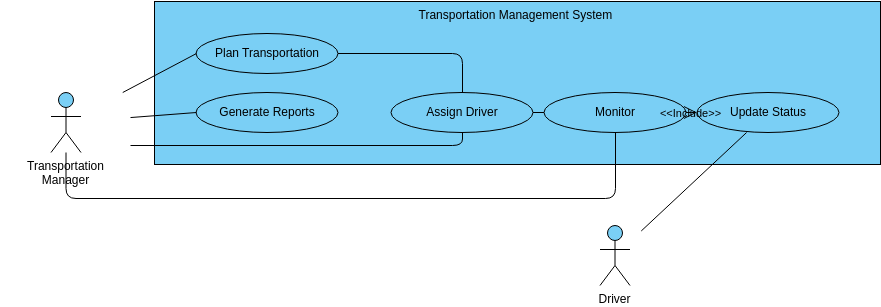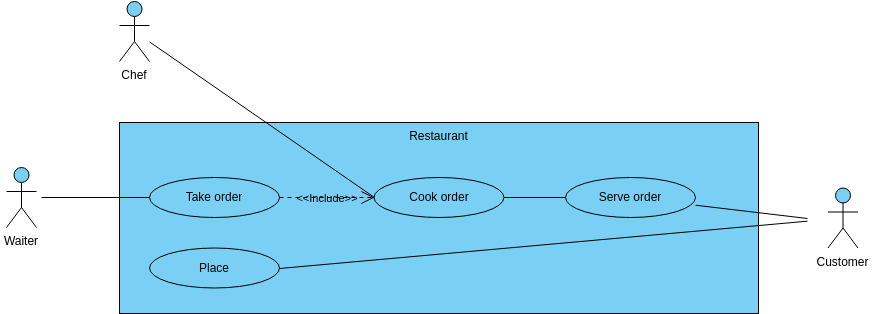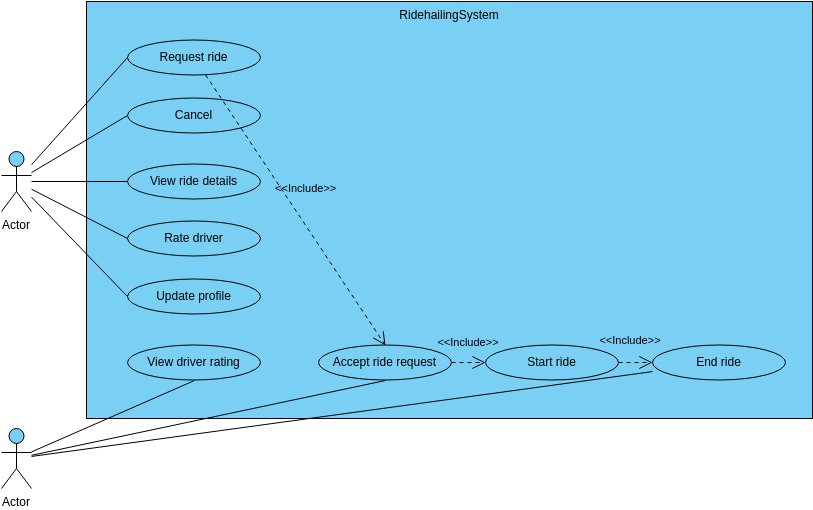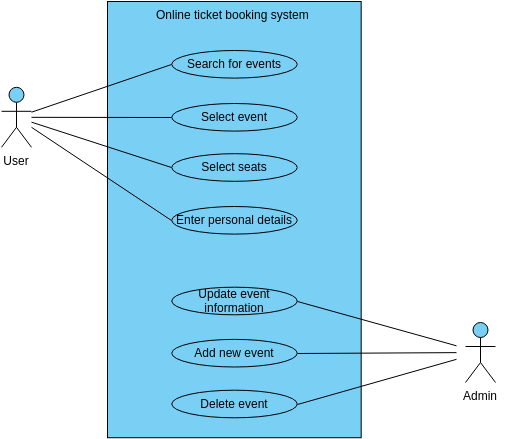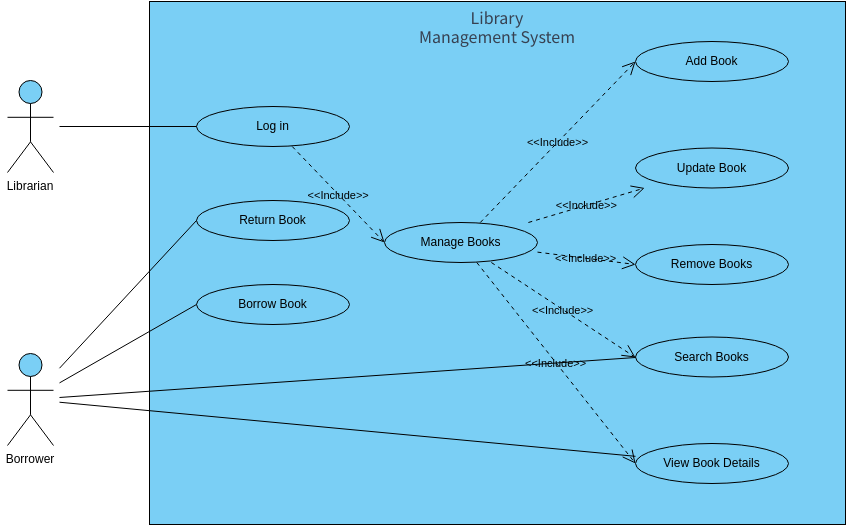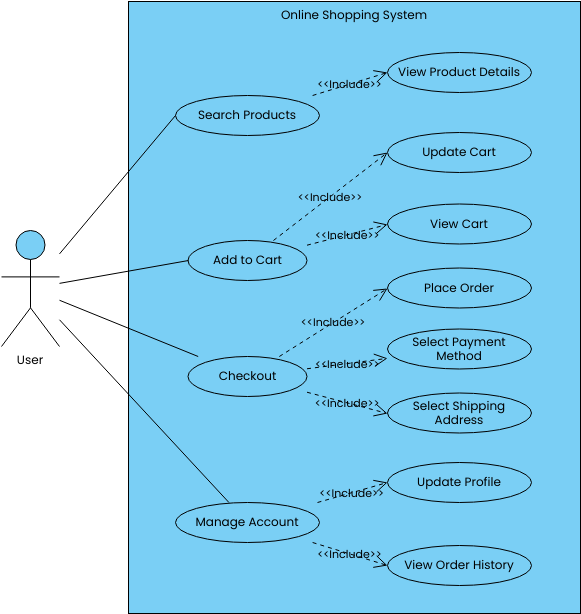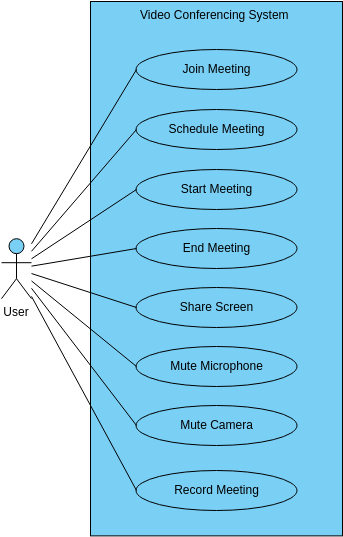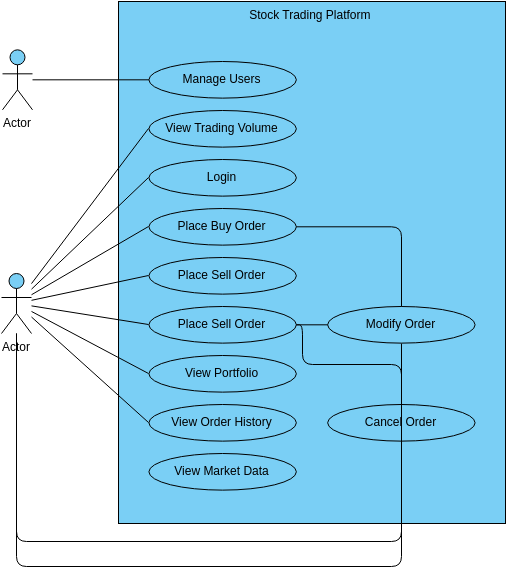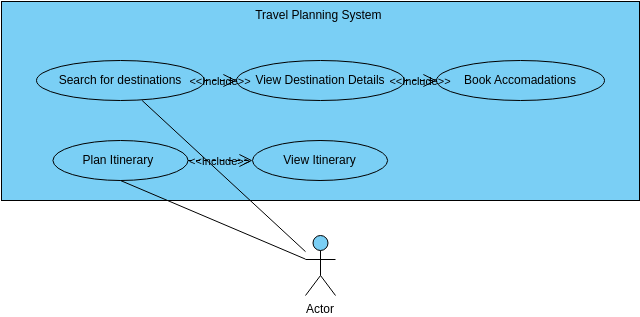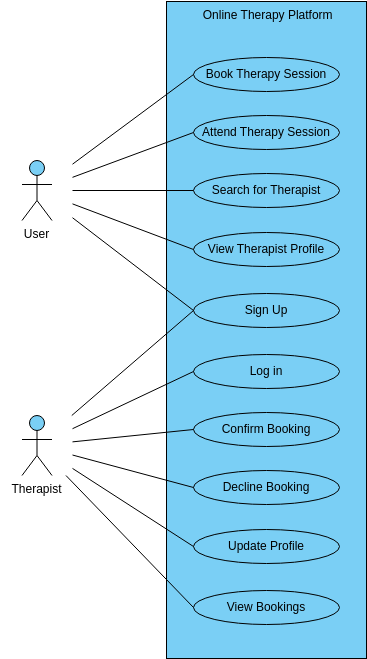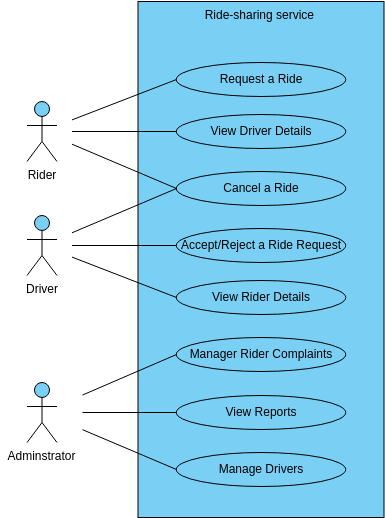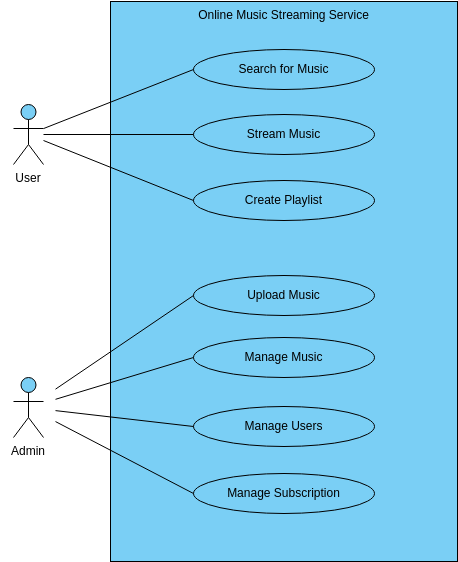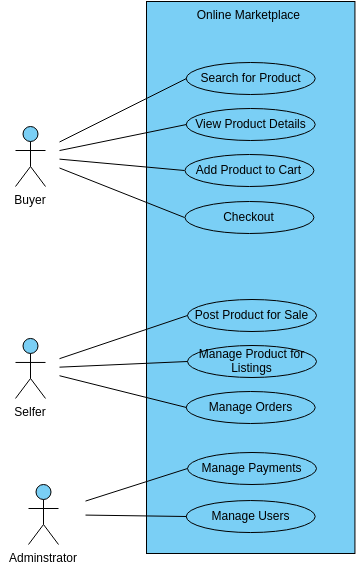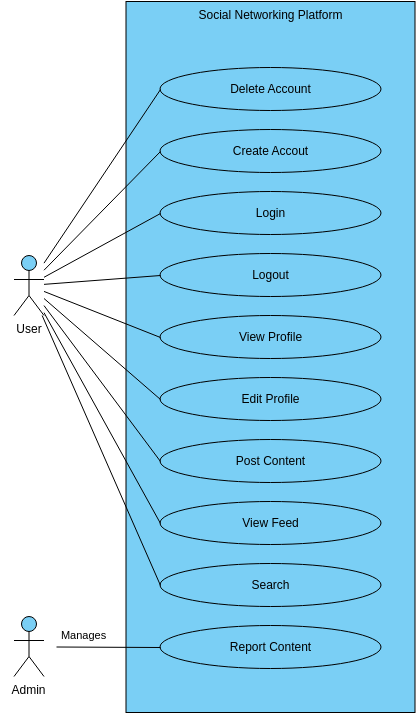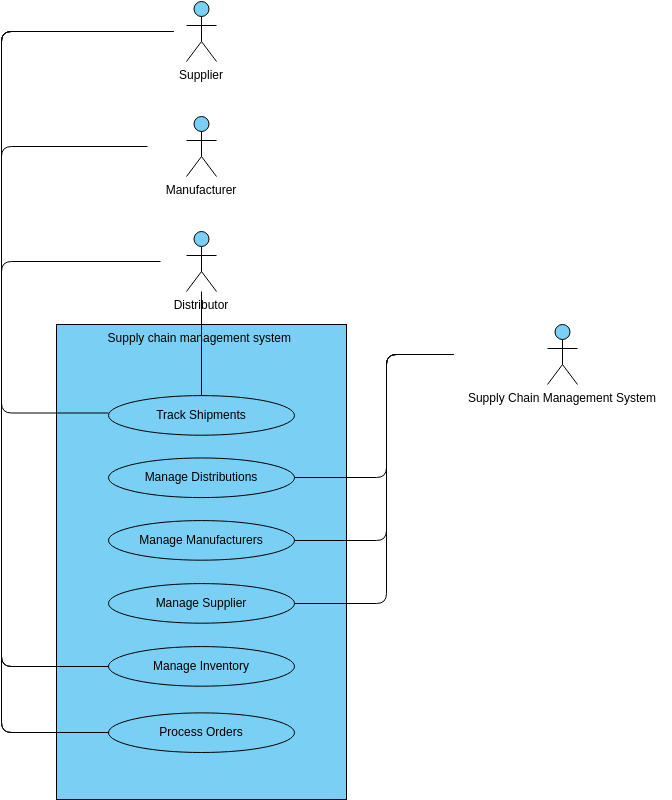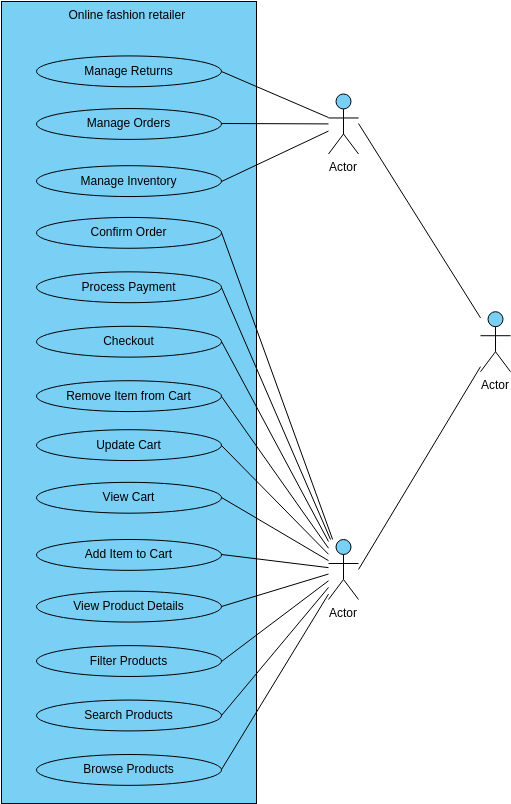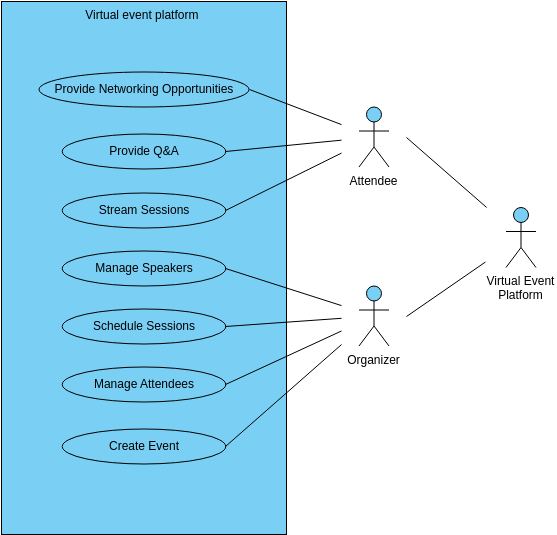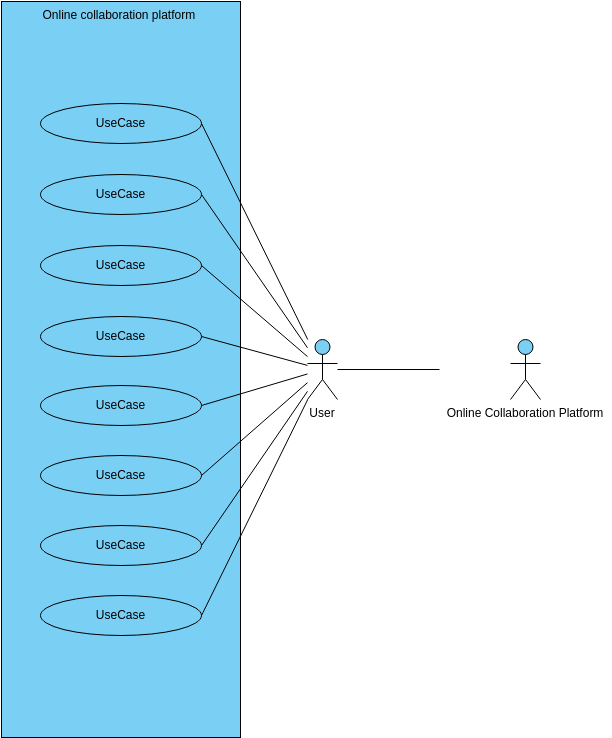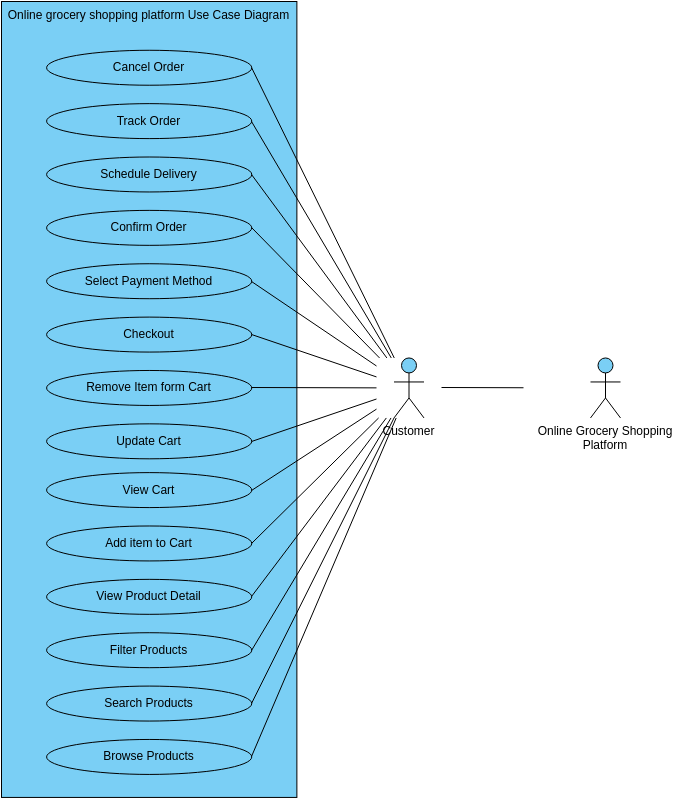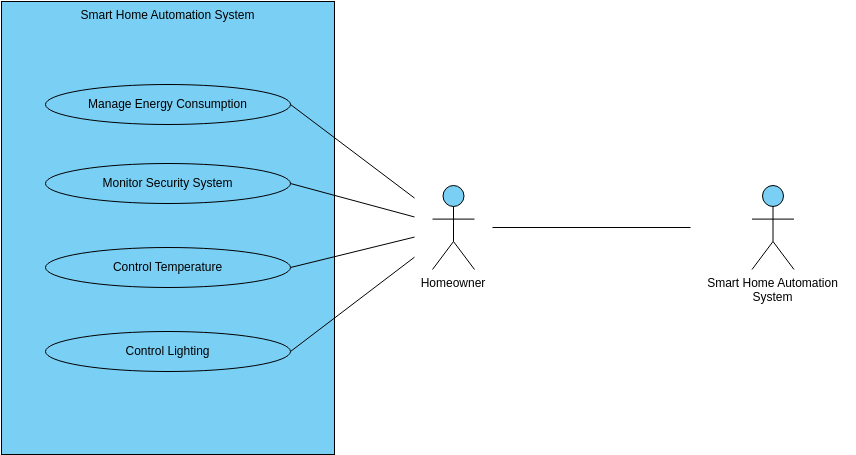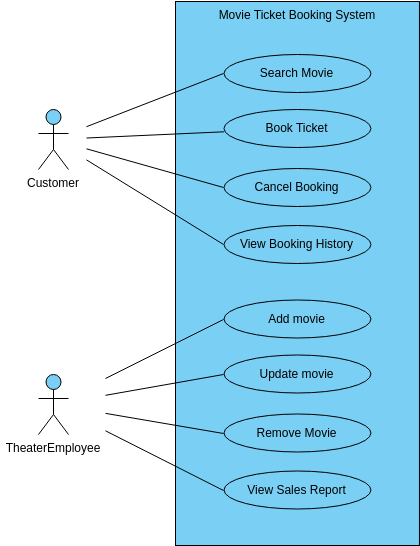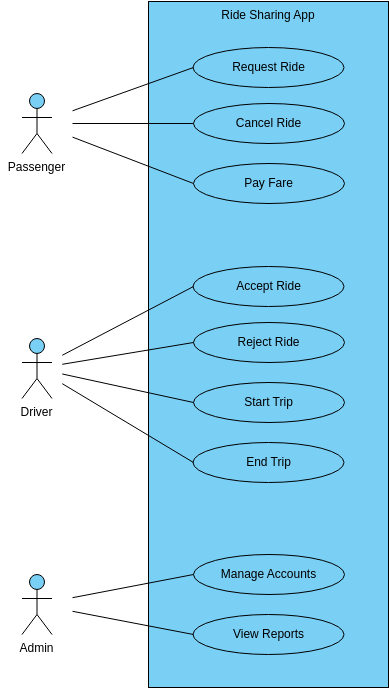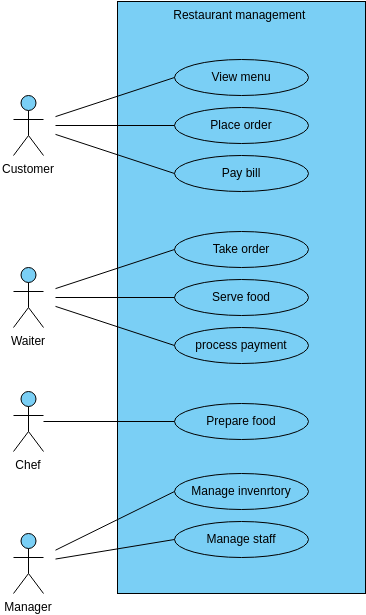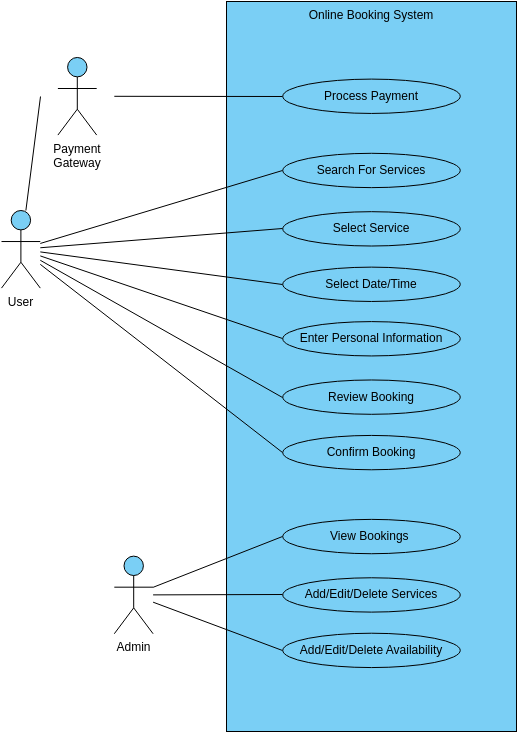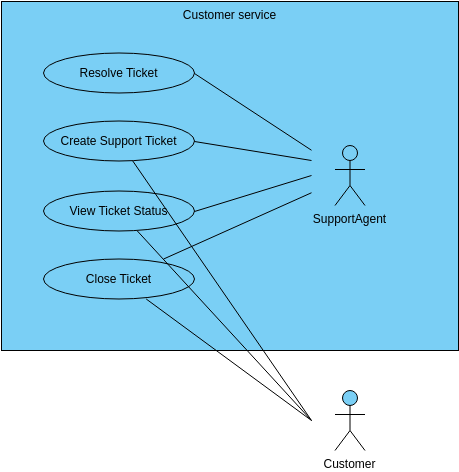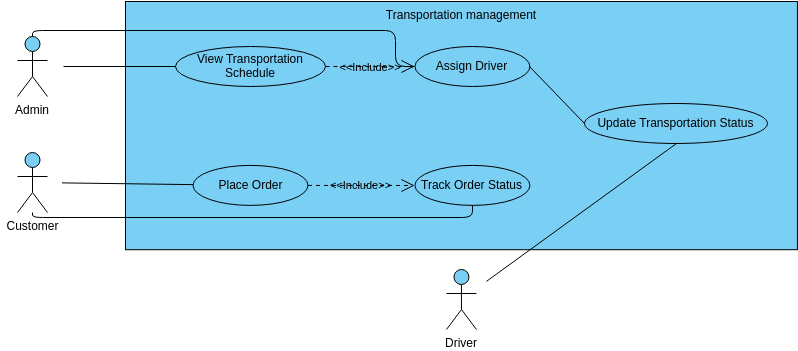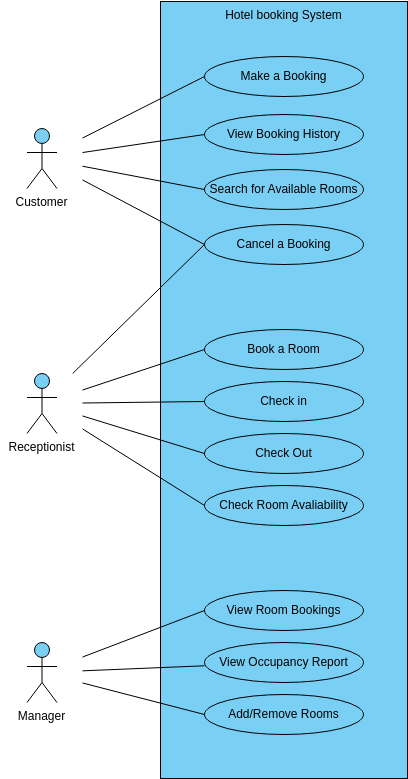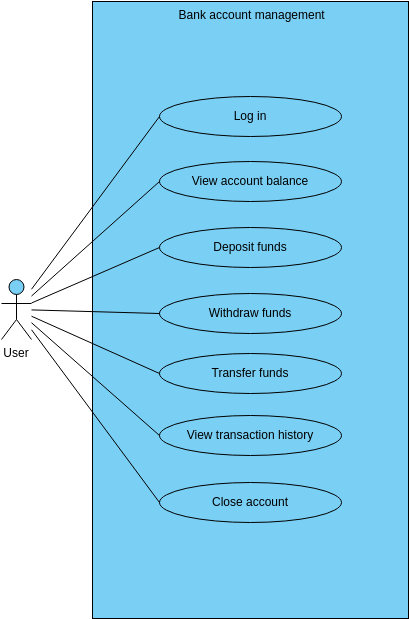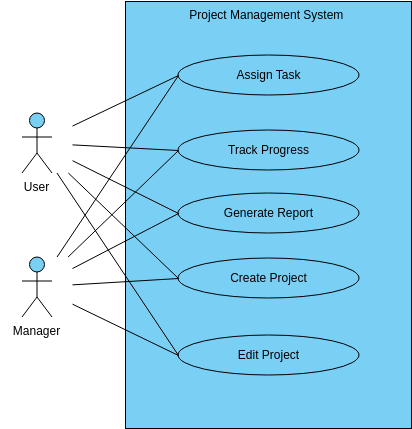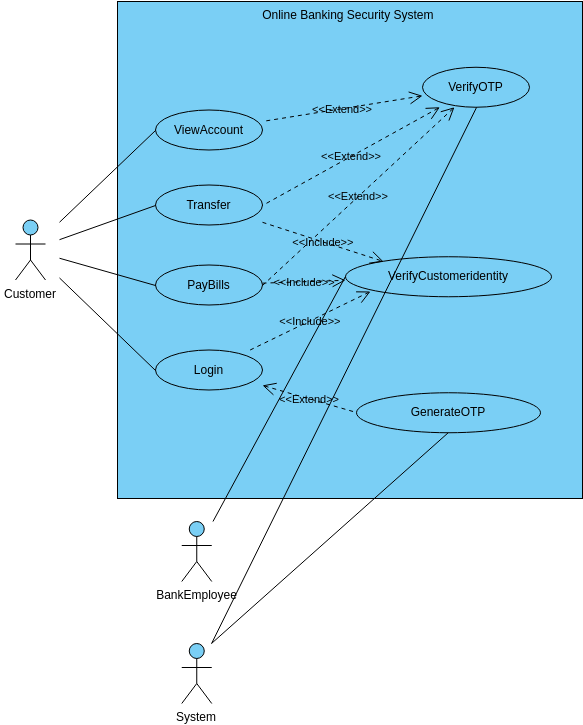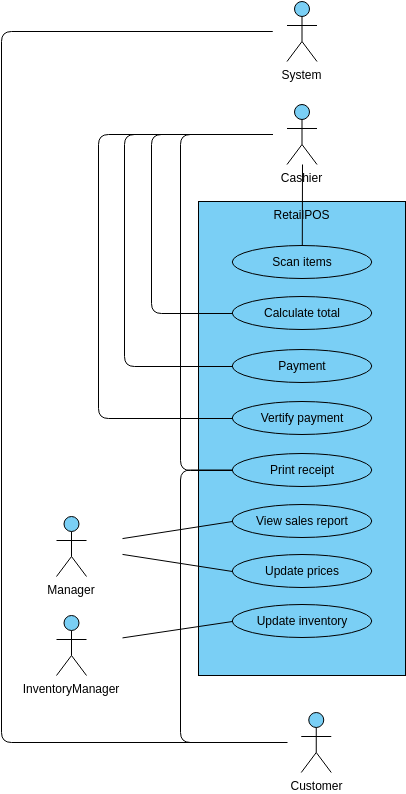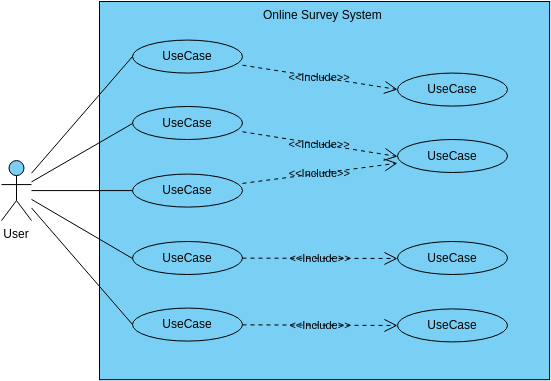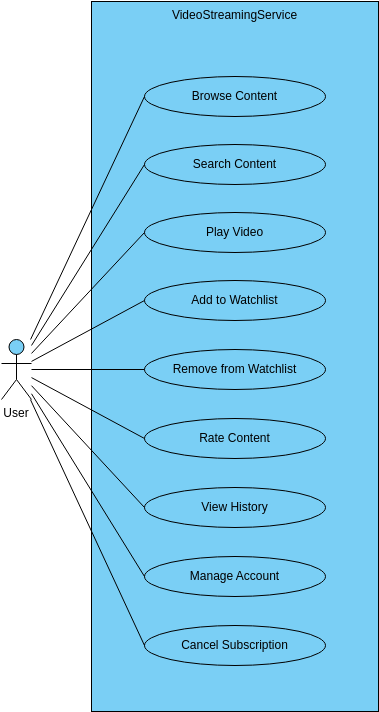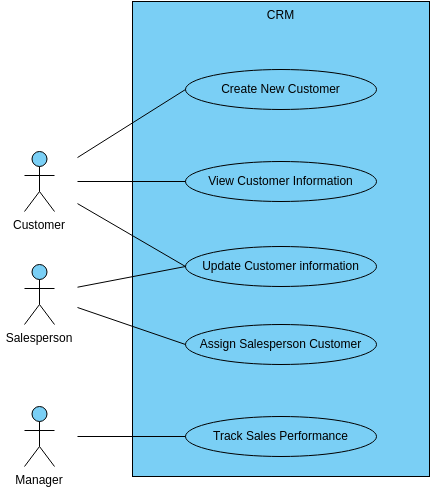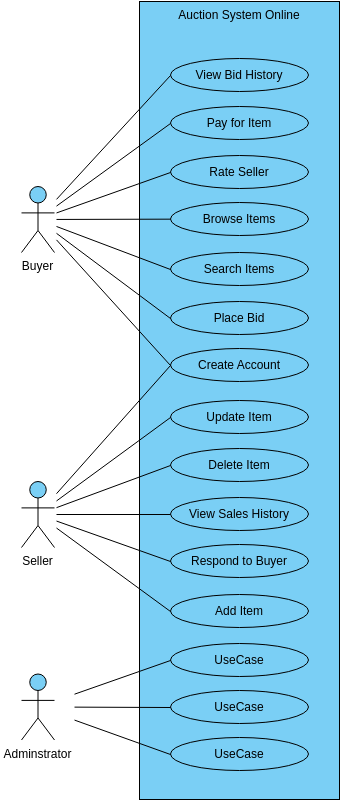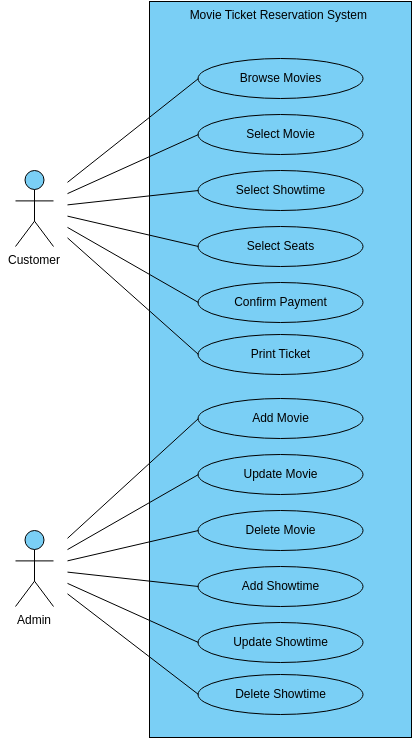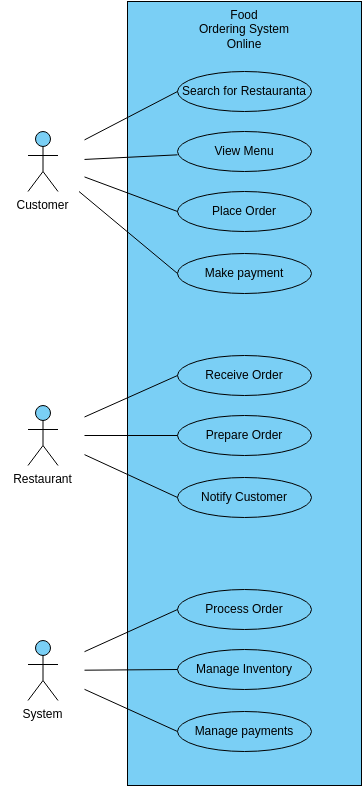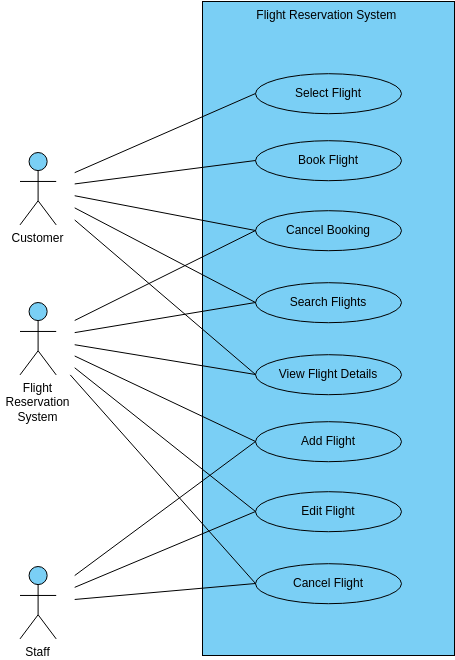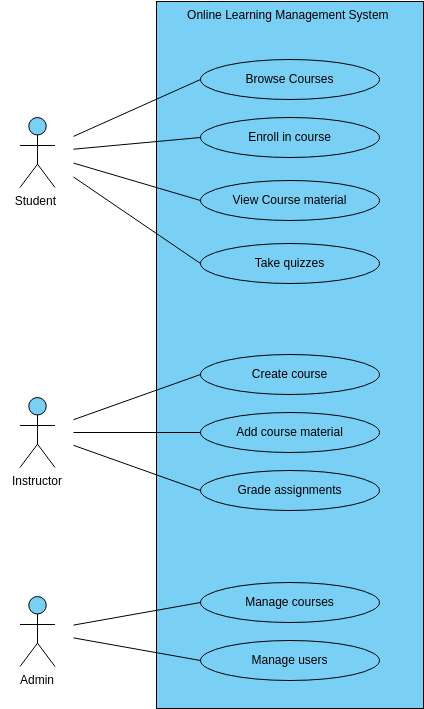Ride-sharing service use case diagram
The Ride-sharing service use case diagram outlines the different actions that can be taken by users of the ride-sharing service. The seven use cases in the diagram include "View Earrings", "View Ride Requests", "Decline Ride Request", "Accept Ride Request", "Provide Ride", "View Ride History", "Cancel Ride", and "Request Ride".
"View Earrings" allows users to view the earrings available for purchase through the ride-sharing service. "View Ride Requests" allows drivers to view the available ride requests, while "Decline Ride Request" allows drivers to reject a ride request they can't fulfill. "Accept Ride Request" enables drivers to accept a ride request and fulfill it, while "Provide Ride" is the core function of the ride-sharing service, allowing drivers to pick up riders and drop them off.
"View Ride History" permits users to review their ride history and expenses, while "Cancel Ride" allows riders to cancel a ride request they've made. The ride-sharing service use case diagram provides a clear and concise representation of the various actions that can be taken by users of the service, ultimately contributing to its success.
In summary, the ride-sharing service use case diagram is an essential tool for managing the various actions that can be performed by users of the service. By providing a standardized process for riders and drivers to follow, the diagram can ensure that the ride-sharing service is used effectively and efficiently. Overall, the ride-sharing service use case diagram can help to improve the quality of the ride-sharing service, enhance the user experience, and ultimately contribute to the success of the service.
Benefits of creating this use case diagram
Creating a use case diagram for a ride-sharing service can provide several benefits for the service provider. It provides a standardized process for drivers and riders to follow, ensuring that they have a clear understanding of the different actions that can be taken. This helps to reduce the risk of errors and inefficiencies and improves communication among team members. Additionally, the visual representation of the use cases can help to identify potential bottlenecks or inefficiencies in the ride-sharing service, leading to improvements that save time and resources and ultimately contribute to the success of the service.
A use case diagram can also help to improve the quality of the ride-sharing service by ensuring that ride requests are fulfilled quickly and accurately. By outlining the different actions that can be taken, the diagram can help to ensure that riders and drivers are matched effectively and efficiently, improving the overall user experience. Ultimately, the use case diagram is an essential tool for managing the ride-sharing service effectively and efficiently, contributing to its success and helping to build trust and loyalty among riders and drivers.
Searching for some use case diagram templates? Go to Visual Paradigm Online and select some designs for customization now!
